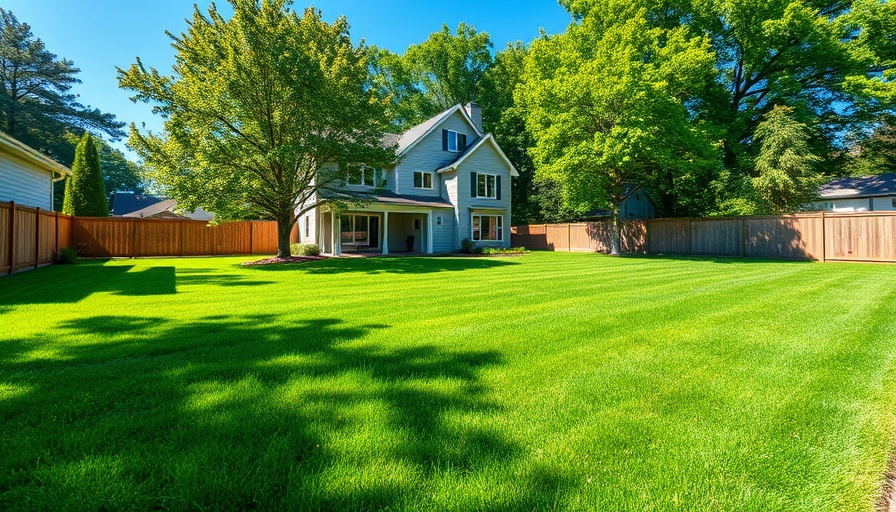
Why Planting Trees Matters for Homes and Communities
Planting a tree extends beyond enhancing mere aesthetic appeal; it is a crucial element in contributing to overall environmental health and community well-being. The USDA Forest Service highlights that trees can elevate property values by up to 15%, while also providing essential benefits such as shade, reduced energy costs, soil protection from erosion, and improved air quality. For homeowners and renters alike, integrating trees into living spaces fosters a connection with nature, promoting biodiversity and mental well-being.
Selecting Trees for Your Environment: A Key to Success
Choosing the right tree for your particular location is essential for successful growth. Consideration of climate zone, soil type, sun exposure, and ultimate size is critical. Each region has tree species that thrive under specific conditions. For instance:
- Pacific Northwest: Douglas Fir
- Midwest: Red Maple
- Northeast: Eastern Redbud
- Southeast: Southern Pine
This tailored approach not only ensures that the trees flourish but also enhances the natural beauty of the environment, promoting biodiversity and providing habitats for local wildlife.
The Emotional and Psychological Value of Tree Planting
As communities become increasingly urbanized, the importance of connecting with nature in our own backyards cannot be overstated. TreeSisters emphasizes how planting native trees in our gardens not only supports local wildlife but also offers a tranquil space for reflection and relaxation. The simple act of tending to a tree can significantly improve mental health, offering a space to unwind while enjoying the auditory and visual delights of nature.
Understanding the Long-term Commitment of Tree Care
While planting a tree may seem straightforward, successful long-term care is a commitment. After planting, regular watering, mulching, and disease monitoring are vital to ensure healthy growth. Remember, trees will need adjustments as they mature—these can include pruning and ensuring they receive enough nutrients. For first-time planters, consulting local gardening guides or professionals can immensely help, ensuring that your newly planted tree thrives.
Making an Investment in Your Property and the Planet
Planting trees is a smart investment—one that pays off in numerous ways. Aside from enhancing property value, trees act as natural air conditioners, cutting down on the energy required for cooling your home. This means lower energy bills and a smaller carbon footprint. Moreover, as the climate crisis emphasizes sustainability, participating in local tree planting initiatives can further amplify your impact, creating a ripple effect in your community.
Steps for Successful Tree Planting
For those looking to dive into tree planting, follow these simplified steps for the best chance at success:
- Pick the Right Species: Match tree species to your local climate and soil.
- Plant at the Right Time: Late fall or early spring are generally the best seasons.
- Water Wisely: Keep the soil moist but not waterlogged for the first few years.
- Monitor Growth: Regularly check for any signs of disease or stress.
- Engage the Community: Involve neighbors or local organizations to build a support system.
Engaging in tree planting not only creates an enriched habitat but can cultivate long-lasting relationships with neighbors and the environment.
Tree Planting Resources: Tools for Success
Many resources are available to support aspiring tree planters, such as:
- Local nursery consultations to buy and learn about suitable tree species
- Online platforms like Redfin that provide information and resources on home-enhancing projects
- Community gardening programs or cooperative extension services with experts and volunteer opportunities
Utilizing these resources can significantly boost your planting experience, creating a healthier, sustainable environment for future generations.
 Add Row
Add Row  Add
Add 



Write A Comment